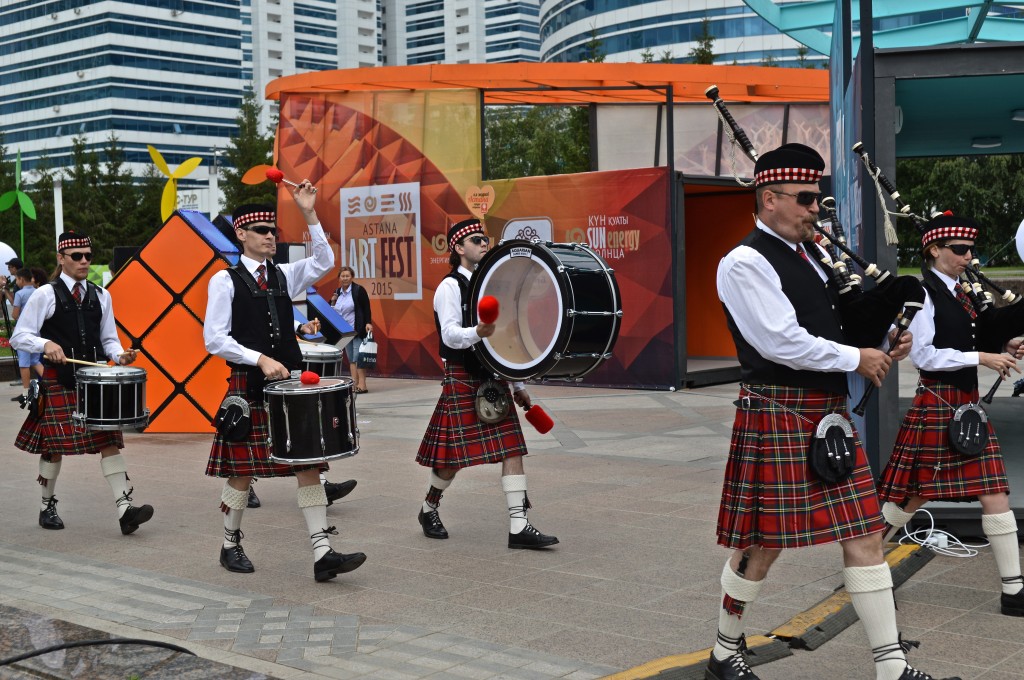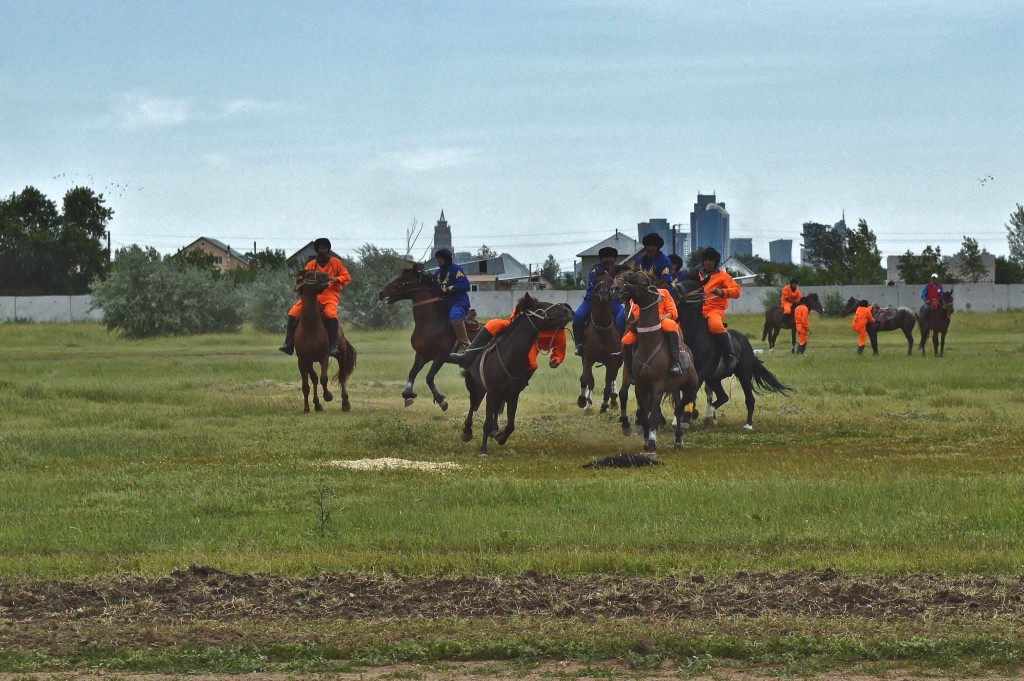ASTANA – Astana Day, the annual combined celebration of the birthday of Kazakhstan’s capital city and the President who has shaped its modern form, was marked this year by a weekend of traditional and contemporary performances.
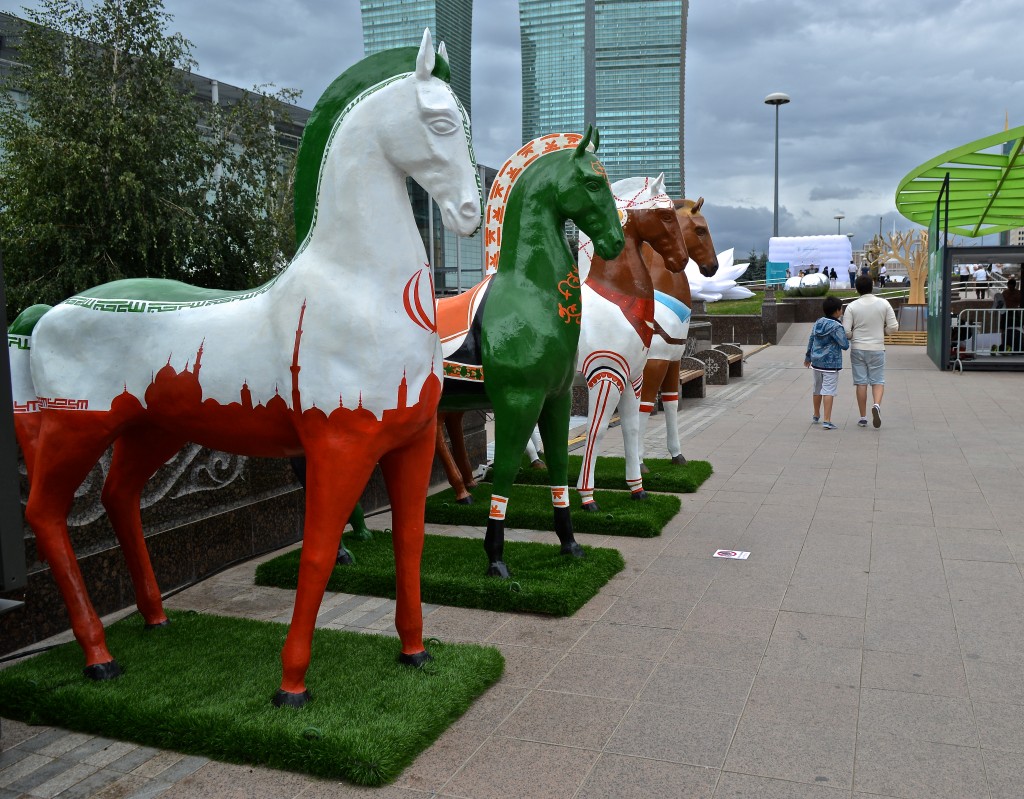
The celebrations around July 6 mark the 17th birthday of Kazakhstan’s young capital. It was on this day in 1994 when the country’s Parliament passed the resolution to move the capital from Almaty to the city then called Akmola. The capital was officially moved to Akmola in December 1997, the city was renamed Astana in May 1998 and formally presented to the world in the summer of 1998.
July 6 this year also marked the 75th birthday of President Nursultan Nazarbayev, who first suggested the idea of moving the capital in 1994, at the lowest ebb of social and economic crisis in the country following the collapse of the Soviet Union. He has since personally overseen the construction of the capital as the symbol of the country’s modern growth.
The Saturday and Sunday before the Monday holiday were packed with events and performances, many promoting Kazakh and Central Asian culture, but also peppered with offerings from around the world, including the Australian performance troupe Strange Fruit, who put on a gravity-defying display of dance, theatre and acrobatics atop swaying poles towering over the crowd near the city’s Baiterek Monument, as well as marching Scottish bagpipers.
Commerce was also an important part of events, with the usual craft and heritage fair set up around Khan Shatyr, where craftsmen from around the region sold traditional clothing, pottery and other souvenirs and performers demonstrated traditional skills, including horse tricks and hunting with eagles.
Another pop-up tent displaying locally made clothes, accessories and food was erected near the Baiterek Tower, showcasing the country’s more modern offerings.
Viktor Rempel, director of Wonderful Things, a local company that makes men’s ties, handkerchiefs and other accessories in whimsical patterns, said he was happy to have a chance to advertise his brand over the holiday weekend. “We are very satisfied by the results of the event,” he said. “We met many people … we sold our goods, too.”
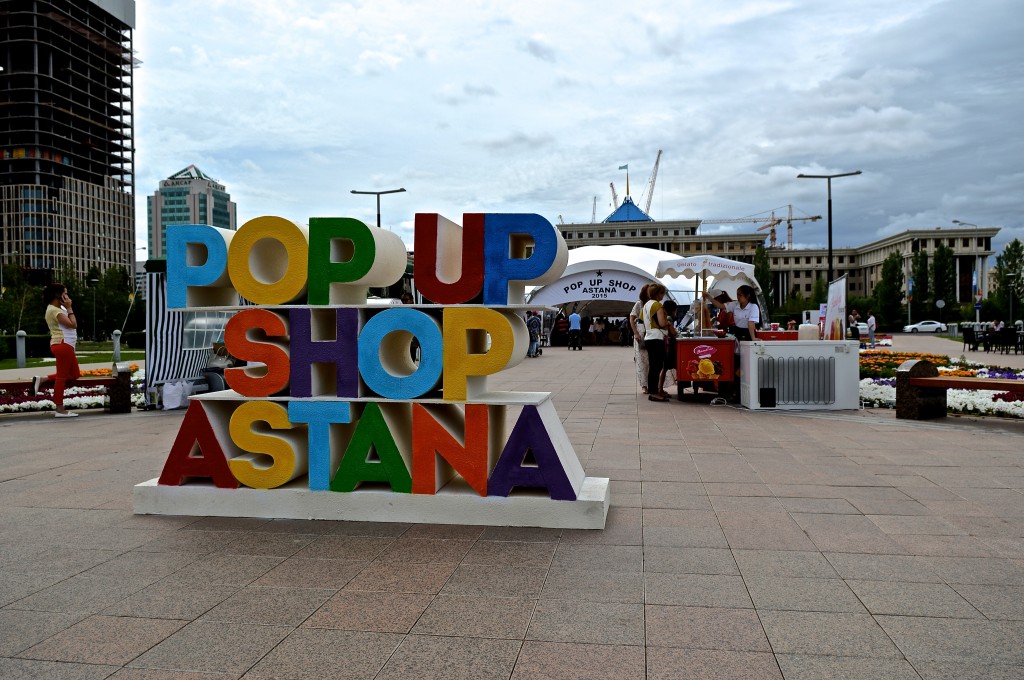
Wonderful Things and the pop-up shop stood at one end of the mall connecting Baiterek and Khan Shatyr, the length of which had been turned into an exhibit of public art, including a herd of life-size painted horses, as well as tents displaying Kazakhstan’s work in developing its alternative energy sphere, the theme of the upcoming EXPO 2017, which Astana will host. Other tents showed cutting edge architecture and design coming out of the country. Elsewhere in the city were cooking exhibitions, parades, horse shows, public opera performances, kite festivals, magic shows and, in the evenings, music and fireworks along the banks of the Yessil River that bisects the town.
Gareth Stamp, head of design technology at the Haileybury School in Astana, called the presentation of a shortened version of the opera “Aida” on July 1 outside the Palace of Peace and Harmony “flawless.”
“The use of the stage and the changing projections onto the side of the pyramid really worked and I was totally engrossed. The finale, with a seemingly never-ending firework and laser show, was breathtaking,” he told The Astana Times on July 7.
Some kilometres outside of modern Astana, the anniversary was honoured with more traditional games. At the Tulpar Sport Club in Astana’s suburbs, a kokpar tournament was held. Kokpar is a traditional Kazakh horse game, likened to polo – but played with a goat carcass. Teams from around the country gathered to play in the two-day clash.
Director of the Astana Kokpar Club Amanzhol Khasenov said his organisation had been teaching boys to play and arranging tournaments for the past 14 years. “This is a tradition that comes from our ancestors,” he said in an interview on July 6. “In ancient times, when our tribes didn’t have wars, they played this game, because the game helps players learn to become good horsemen. The game teaches boys to handle horses very well and to educate their horses and get the skills necessary for battle.”
Even now, with no battles to be fought, the game is important in maintaining Kazakhstan’s tradition of exceptional horsemanship, he said.
Spectator Gerhard Dippenaar, 27, of South Africa, who has lived in Astana for eight months and came to the tournament on July 6, said “kokpar is by a long shot the manliest sport I’ve seen in a long time. Great to see Astana keep cultural activities like this alive!”
Nicola Khan, 29, a lecturer at Nazarbayev University, said she’d been wanting to see a kokpar tournament since before she came to Kazakhstan. “It was an incredible experience and one I will never forget,” she said.
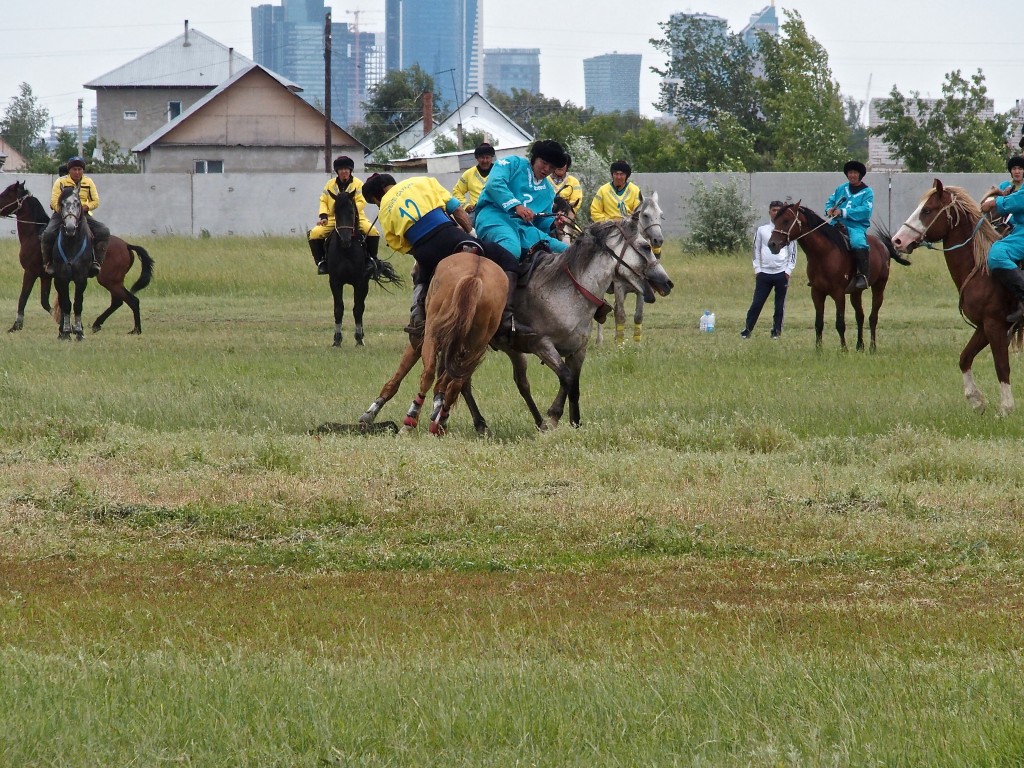
Stamp did have some suggestions for Astana Day organisers: particularly, to spread the events out over the space of a few weeks, as there isn’t enough time in three days to make it to everything, and to provide more information in advance in English for the city’s expat community. He noted that holding the Astana Arts Festival at the same time as Astana Day took away from its impact. “Next year, either spread it out over more time, reduce the events or put more hours in the day!” he said.
This year the Astana Day celebrations also included a spectacular light and firework show on the Yessil River on July 5, and massive fireworks in five locations across the city on July 6.
Since the transfer of the capital to Astana, it has grown from a town of 280,000 people to a city of more than 850,000 as of Jan. 1, 2015.



